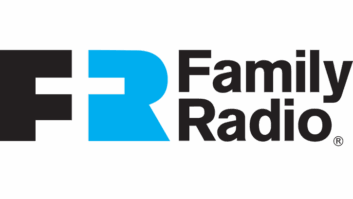In the popular song by the well-known music group Steely Dan, part of the lyrical refrain says “No Static At All.” Those lyrics apply to the topic to be discussed here, except the name of the tune needs to be changed to “AM … No Static At All!”
Yes, hard to imagine that AM could be thought of in a manner that was once held only for its “kissing cousin,” FM. With the rollout of AM HD Radio, the senior band not only offers no static at all, but wide frequency response that is equal to FM, and – ready for this? – stereo!
The number of AM stations that have flipped the switch is growing each week. I’ve recently spent time, earlier this year, listening to the AM HD Radio system on well-known signals in New York City, Philadelphia and Boston.
The sound performance is quite striking when listening between the conventional (analog) and the HD Radio (digital) signal. It’s still a bit surreal to realize that the audio signal emanating from an AM radio contains 15 kHz audio response, stereophonic sound, low noise floor … and … no static at all!
When switching between the analog and digital sections in the HDAM receiver, the sonic perception is analogous as switching from analog AM to FM, but in this case, it’s still on the AM band!
A good Rx
The new HDC audio codec employed by Ibiquity for the AM system was just what the doctor ordered. A good case can be made that puts HDAM audio on par with FM stereo.
In listening to these stations, all of them were using audio processing on the HD Radio channel, but they were not over-doing it. The processing was setup so that the conventional path was generating high average modulation, while the HD Radio channel was lightly processed.
Basically it could be thought of as normalizing the audio on the HD Radio channel, yet the blend between analog and digital was smooth with no loss of loudness between the two paths. An internal level offset in the receiver accomplishes this.
One of the myths to be dispelled is the notion that the HDAM system does not need audio processing. If for the sole reason of level normalization, audio processing must be a part of the system.
Field experience has proven that light to moderate processing actually further improves the listener experience of HD Radio on AM.
Due to the low bit rate characteristics of the HDAM system, heavy processing on the HD channel should be avoided, as it can exaggerate coding artifacts. Also, a processor that is designed for this application must be employed.
Relegating an old unit that was designed for FM will not suffice, as older FM processors contained clipper sections, and those do not agree with the coding process.
A well-designed processor for HD Radio should use a look-ahead limiter as the final peak controller for the HD Radio path. The conventional signal is still processed the same as before.
Now, a combined single-box solution is available, one in which all processing for both the conventional and HD Radio signals is performed in one processor. This method reduces configuration issues and helps to contain installation costs.
Time alignment of the two transmission paths is another factor that will further the benefit to the listener. This requires lining up the diversity delay of the conventional path so the blend function will transition as smooth as possible.
One element that we have learned so far, and have discussed with Ibiquity Digital, is that the need to reduce the conventional audio bandwidth down to 5 kHz, can actually be loosened up to 6 kHz. This “loosening” adds a bit more presence to the conventional audio spectrum.
In order to do this, your audio processor must provide a tight rejection response of the 6 kHz low-pass filter, and insure that any processing spectral artifacts are suppressed extremely low. The testing we did in New York City revealed that good 6 kHz low pass filtering on the conventional analog path, actually improved HD Radio coverage.
This occurred, due to no spectral content from the analog segment polluting the HD Radio spectrum. (This “pollution” problem, by the way, was happening on their prior processor.) These spectrum constraints apply to any audio processor, even when using the 5 kHz bandwidth setting.
The context of this article is based upon the sound performance of the AM system, and does not touch on the RF aspects. Glen Clark of Clark Communications recently offered his overviews regarding coverage and RF performance. As of this writing, the NAB awaits a reply from the FCC to its recommendation that the commission authorize nighttime deployment of HD Radio on AM.
The efforts of our company have been focused on the audio aspect characteristics for digital broadcasting. This includes dynamics processing and codec performance.
We view the RF section as the transport that relays the aural content to the receiver. We don’t even pretend to apply ourselves towards anything more than the audio front-end portion. For those of you who wish to debate the RF attributes, please direct your comments to that forum and/or arena.
Sweeping changes
We live in exciting times! Think about it: communications and computing technology has changed the broadcast industry in so many ways.
The PC and associated networks have dramatically impacted how radio programs are produced, distributed and put on-the-air.
On the transmission side, consider what we’ve observed in our industry in the last five years alone: Digital Broadcast Satellite, HDTV and now DAB (or Eureka-147), Digital Radio Mondiale, as well as HD Radio. The last time we’ve had innovation with similar significance was nearly a half-century ago when color television and FM stereo were introduced.
We have seen a lot of change in little time, and we’re the lucky ones who get to have the experience of implementing these exciting new technologies. It really is exhilarating.
Are these new systems what we, as broadcasters, need to take us into the digital era? While there may be some who are skeptical, our experience is that the technology works and it is ready for the world.
Is it perfect? Of course not; all engineering involves trade-offs, and digital radio is no exception.
I’ll bet when FM stereo was introduced, it prompted a bit of nay-saying – some justified: audio bandwidth was reduced to 15 kHz, and broadcast engineers were soon to encounter the infernal beast known as multipath.
Yet, we did our best to learn and understand the medium, and we’ve been able to improve the performance of the FM stereo system over time.
Certainly, the same will be true of the new mediums. We, together, have the opportunity to take this technology and make it sound the best possible.
Just as there were aural limitations imposed upon the FM stereo system and we learned to live with them, we will also have some sonic challenges with new technology. I don’t dispute those, but nevertheless there are ways to unlock the benefits of these systems.
A point that everyone should consider: HD Radio is in the early rollout phase. In many markets, the number of radios that exist are still just a few, but growing. We as an industry need to look at and work on the elements that will assert broadcasting forward.
This does not mean that issues and concerns should not be raised; quite the opposite. Progress does not occur unless challenges are expressed and then met.
Our job, collectively, is to seek out the valid issues and concerns, rectify them, as this will propel our industry even further.
RW welcomes other points of view






